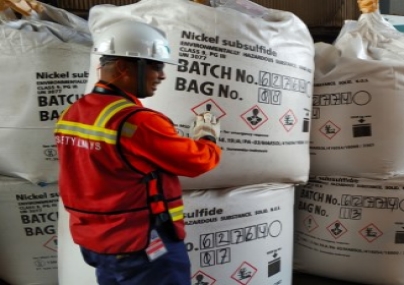
As companies across Asia navigate global macroeconomic complexities fuelled by high inflation and slowing growth, they are growing more prudent over budgets control while still aiming to hit business goals. As such, corporate legal departments are tasked with maximising value to companies with fewer resources at their disposal. General counsel share with ALB how they harness the power of innovation to achieve this Herculean task.
WITH IN-HOUSE LEGAL TEAMS FACING INCREASING CALLS OF “DOING MORE WITH LESS,” HOW ARE YOU, AS A GENERAL COUNSEL, GETTING YOUR DEPARTMENT TO WORK BOTH EFFECTIVELY AND INNOVATIVELY WHILE MAXIMISING VALUE TO THE ORGANISATION?
DAMINI BHALLA, general counsel, Zomato
With passing years, “doing more with less” has become more pronounced given the accelerated pace and increasing demands of a company’s business. There are myriad steps in-house counsels can take to tackle this challenge, work effectively, embrace innovation, and maximise value for their organisations. Some key measures are:
Streamlining operations: Focus on optimising internal processes and using technology to streamline work. This includes implementing document management systems, templatising contracts and workflow automation tools to improve efficiency.
It is also critical to embrace new technologies and approaches to legal work, such as artificial intelligence and machine learning.
Ensure there are no leakages inefficiencies: Work to maximise the value in-house counsel deliver to the organisation. This might involve using metrics and analytics to measure legal department performance, automate repetitive tasks, improve risk assessment, and gain insights into data to correlate performance.
Talent development: Invest in upskilling to ensure the team has the necessary knowledge and resources to meet the company’s demands. This might include training programs, mentoring, and hiring specialists with expertise in evolving areas like data privacy and fintech.
Judicious use of legal budget: Engage external counsel for specialised work that is not repetitive in nature and requires nuanced legal expertise along with a thorough understanding of the prevailing market practice. Examples of such work include M&A transactions and large-scale litigations.
YI WONG, general counsel, Yeo Hiap Seng (Yeo’s)
At first reading, it appears inherently paradoxical as “embracing innovation” suggests incurring inevitable costs, whilst “maximising value” suggests being as lean a cost centre as possible.
This paradigm, however, has shifted if we adopt the perspective that legal departments have moved beyond the cost centre model. What this means is that legal departments, through being both a gatekeeper of the company’s interests and a business enabler, play a role greater than a mere “contract reviewing” cost centre in the traditional gatekeeping sense. The business enabler role can be augmented via greater efficiency and accuracy of advice to maximise, communicate, and deliver value to the organisation.
Greater efficiency in dispensing professional advice can be achieved through the curated use of technology to tackle “low-hanging fruits” (such as autogenerating simple agreements with preapproved legal perimeters, due diligence etc.) and free-ing up lawyers to focus on more high-value work that requires human inputs, such as risk analysis, legal strategies etc. Greater accuracy of advice may come from adopting strategic staffing (use of external subject matter experts), and data-driven metrics in terms of research of applicable laws (which can be done in-house).
Next, in practical terms, general counsel must prioritise their department’s needs, reassess the available technology and investments to be made in that regard as part of a bigger budget allocation and spend analysis exercise. Once these are set in motion with the right legal tech investments made based on the specific needs of the business units the legal department serves, the general counsel can plug into wider corporate initiatives and proffer recommendations to the executive level armed with data-driven key metrics. This will result in maximising value contribution to the organisation.
MEL NIRMALA, ASEAN legal operations excellence lead, Bayer Southeast Asia
Back in 2019, Bayer envisioned a three-year transformation of its in-house legal team globally under the following mission statement: “As an integral part of Bayer’s business operation, we provide protection as well as direction, leveraging functional expertise and technology in a dynamic environment that fosters great talent.”
Following the same, an internal survey with the participation of all in-house country Law Patent and Compliance Teams (LPC) considering a thorough risk assessment was conducted, and the outcome presented a clear picture to our internal business stakeholders on the possibility that 71 percent of the work done by the LPC country teams could be further streamlined or transferring ownership back to the business, delivering sustainable cost savings. Despite the challenging cost savings target for LPC, we did not limit our approach to the Bayer 2022 Platform project to a mere cost-saving exercise. Rather we viewed it as an opportunity to improve, streamline and harmonise our processes, including our commitment to exploring digital ways of working for LPC more proactively going forward.
Upon close consultation with all Bayer business divisions, we believed that our new LPC Tar-get Operating Model will still provide the required services. Fuelled by the business division’s buy-in, Bayer LPC started to escalate and develop its own internal digital transformation for day-to-day matters such as: events risk management, compliance matter within health care professionals, conflict of interest, data privacy risk mitigation/impact assessment and low-risk compliance advice (gift/hospitality). The pandemic, if only, helped to accelerate the digital transformation of the project, which consisted of several stacks including chatbot, SAQs (self-assessment questionnaires), web-based tailored compliance training, self-service contract management tool and other matter management kits; giving Bayer’s in-house team a head-start with being innovative in the way we were approaching legal work.
No, it wasn’t all pretty and accepting initially. Hence, a new work culture, and an agile mindset across all levels, disciplines, and legal functions were introduced as part of the change management training. A “safe-to-try” structured framework providing the right methods, processes, and toolkits was introduced for further amalgamation between businesses and the in-house legal team.
The idea was to transform our LPC business partners’ matters into valuable business-facing & strategic partners, delivering pragmatic, fast, and innovative solutions with a can-do attitude.
This has created an in-house LPC community with a credible voice, fit for purpose, open to new ways of working and self-leadership as the main foundation of a country’s trusted high-performing team.


